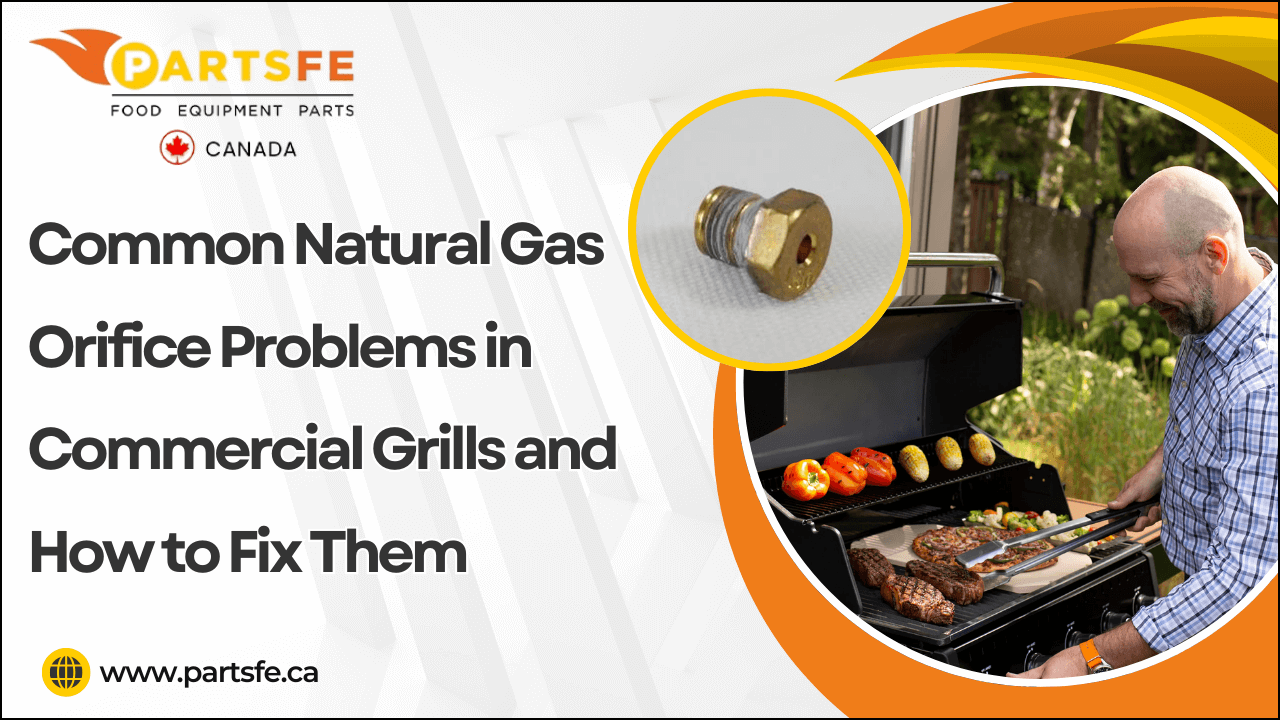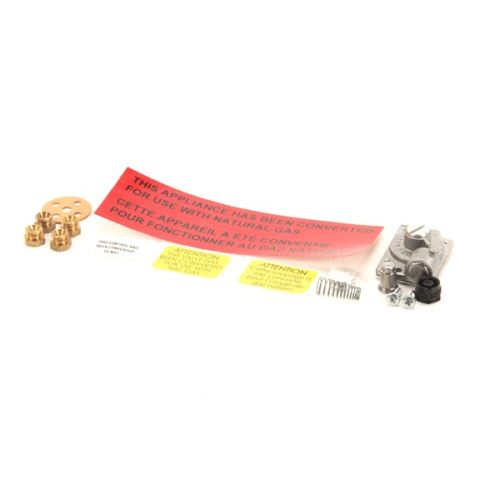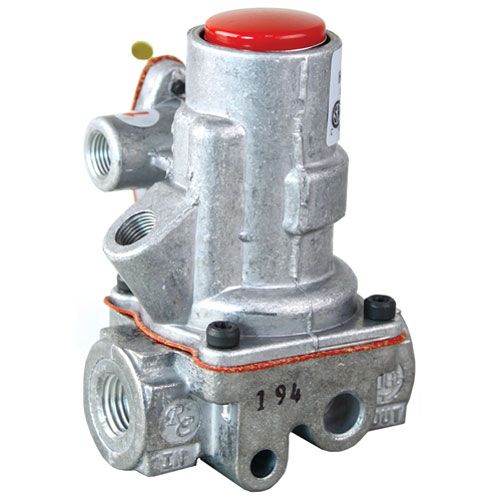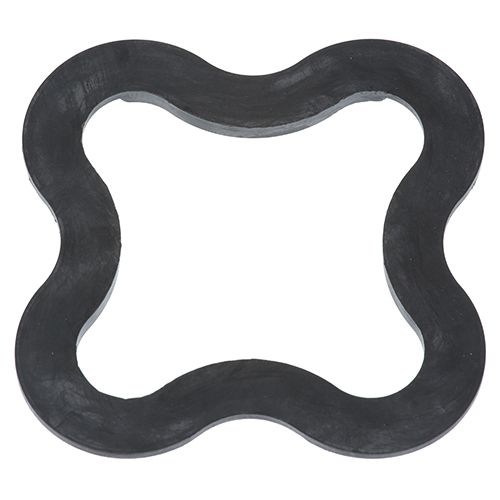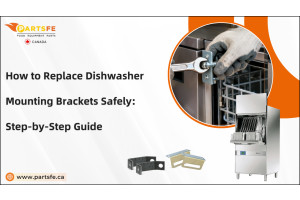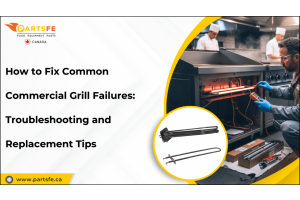Common Natural Gas Orifice Problems in Commercial Grills and How to Fix Them
Natural gas orifices play a crucial role in the performance of commercial grills by regulating the flow of gas to the burners. When orifice problems arise, they can lead to weak flames, uneven cooking, or even complete burner failure, disrupting kitchen operations and compromising food quality. These issues are often caused by blockages, incorrect sizing, or wear and tear over time. Fortunately, most orifice-related problems are easy to identify and fix with the right knowledge and tools. In this guide, we’ll cover the most common natural gas orifice problems found in commercial grills and walk you through simple, effective solutions to restore proper function and ensure safe, efficient grilling in any commercial kitchen setting.
What is a Gas Orifice and Why is it Crucial for Commercial Grills?
A gas grill orifice is a small, precisely sized opening that controls the flow of natural gas from the supply line to the burners in a commercial grill. It plays a critical role in regulating how much gas mixes with air to produce a consistent and efficient flame. Without a properly functioning orifice, a grill cannot maintain the correct fuel-to-air ratio, which can lead to various performance and safety issues.
Why the Gas Orifice is Crucial:
-
Regulates Gas Flow: Ensures the correct amount of gas reaches the burners for proper combustion.
-
Controls Flame Quality: Maintains a steady, blue flame essential for efficient cooking.
-
Matches Grill Specs: Must align with the grill’s BTU rating and gas type (natural gas or propane).
-
Prevents Malfunctions: Reduces the risk of issues like uneven heating, yellow flames, or burner failure.
-
Supports Safety: Prevents incomplete combustion, which can produce dangerous carbon monoxide
-
Compliance: Health and fire codes often require equipment to be configured correctly, including orifice sizing.
-
Optimizes Efficiency: Proper orifice function maximizes fuel usage, leading to better energy efficiency and cost savings.
-
Promotes Consistent Cooking: Ensures uniform heat distribution, reducing hot spots and allowing for even cooking of food.
-
Prevents Gas Waste: A properly sized orifice ensures that no excess gas is being used, reducing waste and lowering operational costs.
-
Improves Equipment Longevity: Well-maintained orifices prevent strain on the grill's components, extending the lifespan of the equipment.
-
Reduces Maintenance Costs: A functioning orifice prevents the need for costly repairs and replacements by addressing small issues early on.
Looking for reliable replacement parts to fix natural gas orifice problems in your commercial grill? PartsFeCA offers a wide selection of high-quality parts from trusted brands like Vulcan, Garland, and Southbend. Shop essential components such as gas orifices, burner valves, and manifold assemblies to keep your kitchen running smoothly!
Signs Your Commercial Grill Has a Gas Orifice Problem
Recognizing when your commercial grill orifice natural gas problem is key to preventing further damage and ensuring the safety of your kitchen operations. Here are some common signs that indicate an issue with the gas orifice:
-
Uneven Heating: Hot and cold spots on the grill suggest the gas is not being evenly distributed, likely due to a gas orifice issue.
-
Delayed Ignition: If the burners take longer to ignite, the gas orifice may be clogged or improperly sized.
-
Gas Smell: A noticeable gas odor could mean a leak or improper gas flow, potentially caused by a faulty orifice.
-
Burner Failures: If one or more burners don’t light or stay lit, the gas orifice may be obstructed or damaged.
-
Hissing or Unusual Noises: A hissing sound could signal a gas leak or irregular flow, often linked to a blocked orifice.
-
Increased Fuel Consumption: A sudden increase in gas usage may be caused by an improperly functioning gas orifice.
-
Excessive Smoke: Excess smoke during grilling suggests incomplete combustion, often due to a clogged orifice.
-
Burner Flame Color Changes: Flames that alternate between blue and yellow/orange can indicate a problem with the gas orifice.
-
Gas Grill Flame is Low: If the flame on your grill appears weak or small, it may indicate a blocked or improperly sized gas orifice restricting the flow of gas.
-
Gas Grill Low Flame on High: When the flame remains low even with the burner set to high, it suggests a potential issue with the gas orifice, such as clogging or incorrect sizing.
Common Gas Orifice Issues and Their Fixes in Commercial Grills
Commercial grill gas orifice issues are common but can lead to inefficient cooking, safety hazards, and costly repairs if not addressed. Here are some typical problems and their causes:
Clogged Orifice
Buildup of food debris, grease, dirt, or other contaminants inside the orifice. Restricts gas flow, leading to weak flames, uneven heating, or burner failure. Regularly clean the orifice with a wire brush or compressed air to remove any blockages, and ensure the grill is properly cleaned to prevent buildup.
Incorrect Sizing
The orifice is not properly matched to the grill’s BTU rating or gas type (natural gas vs. propane). A too-small orifice limits gas flow, causing low heat output, while a too-large orifice leads to excessive gas flow, resulting in high flames and inefficiency. Ensure the orifice is the correct size for your grill’s specifications, and if in doubt, consult the manufacturer or a professional technician for proper sizing.
Corrosion and Wear
Exposure to heat, moisture, and other elements over time can corrode or wear down the orifice. Reduced ability to regulate gas flow, leading to poor combustion, inconsistent flames, and potential gas leaks. Inspect the orifice regularly for signs of corrosion, and replace it if necessary. Applying a protective coating or keeping the grill covered can help reduce corrosion.
Gas Grill Regulator Issues
Regulator issues often occur due to wear and tear from prolonged use, exposure to heat and moisture, or physical damage. A faulty regulator can lead to fluctuating or weak flames, delayed ignition, and inconsistent heating, affecting the grill's performance. To fix gas regulator issues, inspect it for cracks or rust and replace it if needed. Ensure the gas pressure is correct, and consult a technician for calibration or installation if uncertain.
Dirty or Blocked Gas Lines
Over time, gas lines can accumulate dirt, grease, or other contaminants that hinder gas flow to the orifice. Blocked gas lines cause inconsistent gas delivery, leading to weak flames, delayed ignition, or burner failure. Periodically clean the gas lines, check for blockages, and replace any corroded or damaged lines to maintain smooth gas flow.
How to Identify the Right Orifice Size for Your Commercial Grills
Choosing the correct natural gas orifice size for your commercial grills is essential, particularly when converting between propane and natural gas or replacing damaged components.
Refer to the Manufacturer’s Specifications
Check your grill’s user manual or technical sheet for the exact orifice size recommended for natural gas operation.
Understand Orifice Numbering
Orifice sizes are measured in drill numbers or decimal inches. A smaller hole = larger drill number, which limits gas flow. For example:
-
#54 orifice = 0.055 inch (commonly used for natural gas).
-
#60 orifice = 0.040 inch (more common for propane).
Here’s what you need to understand:
-
Drill Numbering: The numbering system is based on the diameter of the orifice, with a higher drill number indicating a smaller hole size.
-
Gas Type Impact: Since propane has a higher pressure than natural gas, propane orifices tend to have smaller holes to regulate the gas flow appropriately.
Always match the orifice size to the type of gas used in your grill, as using the wrong orifice can result in poor performance or safety issues.
Use an Orifice Sizing Chart
Consult an orifice size chart based on BTU requirements, gas type, and pressure levels. Matching these elements ensures your grill receives the optimal gas flow.
-
BTU Requirements: The orifice size must match the BTU rating of your grill burner to ensure the correct gas flow and consistent flame for optimal heat generation.
-
Pressure Level: The orifice size should be adjusted according to the specific gas pressure in your system, with a sizing chart helping to select the correct orifice for your grill type and location.
Consult a Certified Technician
If you're unsure about the correct orifice size, it's best to consult with a technician or a professional who can assess your grill and install the appropriate orifice.
-
Accurate Measurement: A professional can measure the gas pressure and confirm the correct orifice size needed.
-
Installation: A technician can properly install the correct orifice and calibrate the gas flow for optimal grill performance.
-
Safety: Incorrectly sizing or installing the orifice could lead to unsafe conditions, such as gas leaks or fire hazards. A certified technician will ensure everything is set up to industry standards.
Steps to Clean or Replace a Gas Orifice in Commercial Grills
Cleaning or replacing a natural gas orifice in commercial grills is essential for maintaining efficient gas flow and safe operation. Follow these steps to ensure your grill performs optimally and avoids potential issues.
Step 1: Turn off the Gas Supply
Ensure the gas supply is completely turned off before starting any maintenance work.
Step 2: Disconnect the Grill
Carefully disconnect the grill from the gas supply to prevent gas leaks during the process.
Step 3: Locate the Orifice
Find the orifice near the burner or within the burner assembly, as specified in your grill’s manual.
Step 4: Clean the Orifice
Use a small wire brush, compressed air, or a needle to clean the orifice of any food debris, grease, or blockages.
Step 5: Inspect for Damage
Examine the orifice for signs of wear, corrosion, or cracks, which could require a replacement.
Step 6: Replace the Orifice (If Necessary)
If damaged, replace the orifice with a new one that matches your grill’s specifications for size and gas type.
Step 7: Reassemble and Test
Reassemble the burner assembly, reconnect the gas supply, check for leaks, and test the grill for proper flame ignition.
Step 8: Check for Proper Gas Flow
Once the orifice is cleaned or replaced, check the gas flow to ensure it's steady and consistent.
Step 9: Inspect the Burner Assembly
Make sure the burner assembly is free of any grease or debris that might hinder the orifice’s function or gas flow.
Step 10: Test the Flame Adjustment
After reassembling, adjust the flame height using the control knobs to ensure the flame is steady and properly sized.
Step 11: Verify the Grill's Operation
Turn on the grill and ensure that the heat is distributed evenly across the surface and that all burners light properly.
Step 12: Tighten Any Loose Connections
Check that all connections, including the gas line and burner components, are tightened securely to prevent leaks.
Regular cleaning and proper maintenance of the gas orifice will ensure optimal performance and prevent common issues, making gas grill troubleshooting easier and more effective.
Check out our ultimate guide to seasoning cast iron grill grates for commercial gas grills to enhance performance and extend the life of your grill grates.
Preventive Maintenance Tips to Avoid Orifice Problems
Preventive maintenance is essential for avoiding natural gas orifice issues and ensuring the safe, efficient operation of your commercial grill. Regular care helps prevent clogs, poor heating, and gas leaks.
-
Perform a Gas Leak Test: Apply soapy water to gas connections and the orifice to check for leaks. If bubbles appear, it signals a leak that must be repaired immediately.
-
Use Grill Covers: Cover your grill during downtime to protect it from dust, moisture, and debris. This helps prevent corrosion and orifice blockages over time.
-
Avoid Overheating: Always operate the grill within the manufacturer’s recommended temperature range. Overheating can damage the orifice and reduce grill efficiency.
-
Season Burners: Apply a thin layer of oil to burners after cleaning to prevent rust and corrosion. This promotes smooth gas flow and protects the orifice.
-
Use High-Quality Gas: Ensure the gas supply is clean and free of contaminants like moisture or residue. Impure gas can clog or damage the orifice over time.
-
Rotate Gas Cylinders: Switch propane tanks regularly to avoid pressure inconsistencies. Balanced pressure helps maintain proper orifice performance.
-
Start-Up Maintenance: After periods of inactivity, inspect orifices, burners, and gas lines thoroughly. This helps catch issues early before grill use resumes.
-
Keep Air Vents Clear: Make sure air vents are free from grease or debris buildup. Clear airflow supports proper combustion and efficient gas use.
Check out keep it clean: 4 effective ways to clean your grill grates for practical tips to maintain your grill's cleanliness and performance.
Maintaining the natural gas orifice in your commercial grill is not just about preventing minor issues, but it’s about protecting your kitchen’s efficiency, safety, and productivity. From clogged orifices to incorrect sizing, the problems may seem small, but can have serious impacts if ignored. Fortunately, most issues can be prevented or resolved with routine inspections, proper cleaning, and by using the right components for your grill’s specifications. Incorporating these best practices into your regular maintenance schedule will not only extend the lifespan of your grill but also ensure consistent cooking performance and compliance with safety standards. Addressing gas grill issues proactively will go a long way in keeping your kitchen running smoothly.
FAQs
How do you know if your gas grill regulator is bad?
A bad gas grill regulator can cause issues like low or fluctuating flame, delayed ignition, or uneven burner operation. If you notice a gas smell or hear hissing sounds, it may indicate a regulator problem.
Are propane orifice vs. natural gas different?
Yes, propane orifices are smaller because propane has higher pressure than natural gas. Using the wrong orifice can lead to inefficient burning, poor performance, or safety issues.
What size orifice for a natural gas grill?
The size of the orifice depends on your grill's BTU rating, but a #54 orifice is common for natural gas. Always check the manufacturer's specifications to ensure correct sizing for optimal performance.
How to reset gas grill regulator?
To reset a gas grill regulator, first turn off the gas supply and disconnect the tank. Reattach the tank and slowly open the valve to allow the regulator to reset and regulate gas flow.

